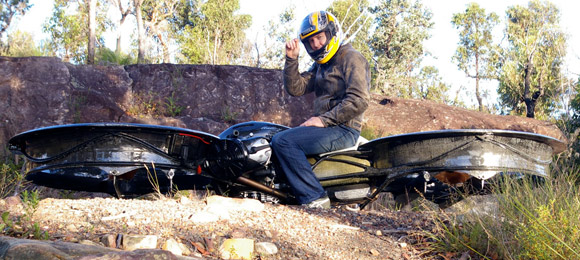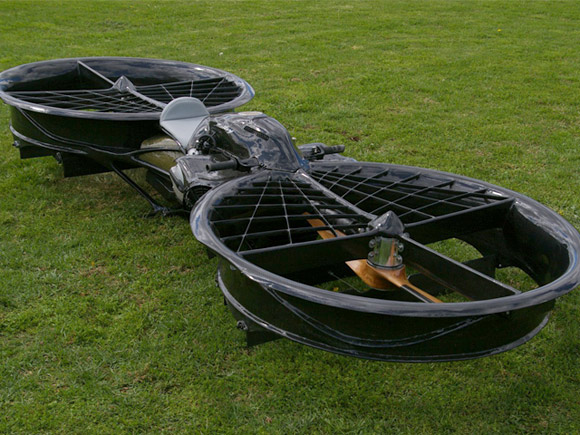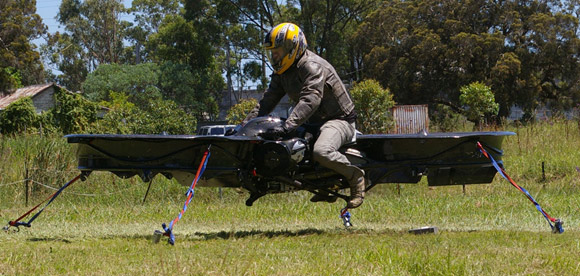While humans weren’t put on this earth to fly, the Wright brothers were unwilling to accept this, and thus invented and created the worlds first successful airplane. We have since come a long way regarding aeronautics but yet, some still aren’t satisfied. That’s where Chris Malloy comes in. Malloy has dedicated the last two years of his life to building the Hovercoat prototype; an unconventional, carbon fiber, helicopter, motorbike thingy.

Malloy works at an optical engineering company in Australia, in mechanical design of airborne and ground based hyper spectral sensors (it’s only fitting). For the past two years, he has spent all of his spare time, developing the Hoverbike in his home garage with hopes to replace conventional helicopters, such as the Robinson R22.
Similarly to the Robinson R22 and other helicopters like it, the Hoverbike will function in applications such as aerial cattle mustering, search and rescue, aerial survey, film, etc. Benefits include a cheaper and better product that will be more affordable to most people with less maintenance costs.
Now on to the specifics. The Hoverbike (remember, just the prototype) is made up of a foam core frame, covered with Kevlar reinforced carbon fiber. There are two horizontal spinning propellers made from Tasmanian Oak with a carbon fiber leading edge. Malloy says the Hoverbike should be able to reach at least 10,000 feet and an indicated airspeed of 150 knots (278 km/h or 173 mph). Control of the Hoverbike is done using the handlebars while forward and reverse movement is controlled by the handlebar grips. Turning is achieved by turning the handlebars left and ride just like any standard bike.

A preliminary stage of testing has already been completed, but there is much more to go. “So far the hoverbike has completed the first stage engine and driveline tests. We have conducted a series of tethered flights, testing the sensitivity of the control surfaces – such as the ability to easily maintain a controlled hover, and maneuvering the vehicle within the hover. We are currently completing roll testing, and will remove the tethers next to allow basic testing of the control surfaces in simple test patterns in and out of ground effect.”
You may also notice that some pictures of the testing, there are straps placed on the Hoverbike, strapping it to the ground. This is done because of safety and the unknown during the early on testing and if something were to go wrong, the company does not want anything to happen to the precious prototype.

Malloy is currently looking for investors and engineers to further the Hoverbikes existence. We wish him the best of luck and hope to see this carbon fiber, almost helicopter/motorbike in person one day. As always, check back for updates!